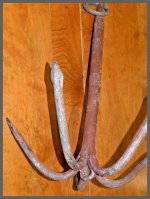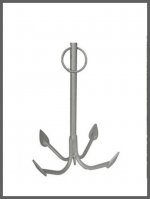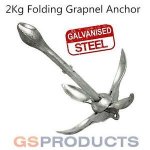My husband and his buddies go fishing on a charter boat in the Chesapeake Bay off Southern Maryland every year and 'caught' this anchor this past fall. It looks unique due to the number of 'hooks' and we know little about anchors or dating them so thought I would show it here and get opinions. I searched the web looking at anchors and could not find one that looked like this. There have been tons of shipwrecks in the bay going waaay back. We are going to display it out by our pool and it has mussel and barnacle remains on it and we find it very interesting. Would appreciate any insight and thanks. Its about 3 feet tall. The one picture was not 'on its side' when I selected and uploaded it ?
?


Terrib
 ?
?

Terrib
Last edited:











